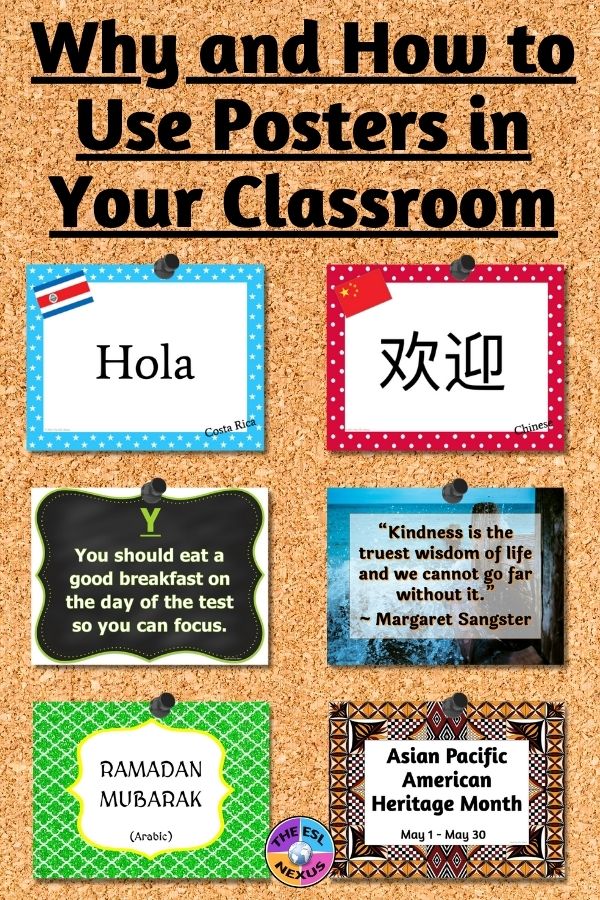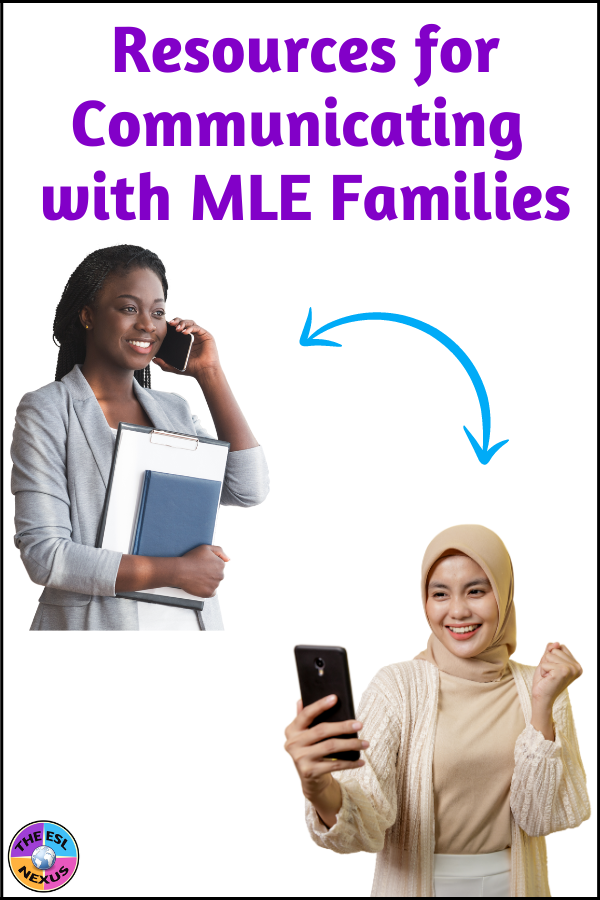Have you ever actually thought about why you put up posters to decorate your classroom? Sure, they look pretty and add color to your walls, but do they really serve a purpose? In this blog post, I’m going to break down the reasons you should use posters with information on them, different kinds of posters, what you should be on the lookout for when displaying posters, and a few ways to use posters. I’ll also share some examples of the different types of posters discussed in this post.
 |
| Find all 3 types of posters HERE; source: The ESL Nexus |
Benefits of Using Posters
* Posters help reinforce what you are teaching. They provide visual support of academic concepts, vocabulary words, and/or classroom rules and procedures. Information on posters can be easier for students to remember because the text and images work together and are presented in comprehensible ways. This is particularly helpful for Multilingual Learners of English.
* Posters enhance your classroom environment. They add color and create a positive learning atmosphere. In turn, that helps motivate students.
* It shows that your classroom welcomes all students when you display posters that reflect your students cultural, religious, and linguistic backgrounds. Newcomer English Learners and students from a variety of ethnic, religious, and racial backgrounds will be more engaged when they see posters that include people from diverse backgrounds.
Types of Posters
* Academic content posters: These posters display information about specific academic topics. They can be for core content subjects as well as for Health, Music, and other Specials. Information on these posters may be about historical time periods, math or science concepts, literary genres, grammar structures, biographies of famous musicians, or nutrition, for example.
* Inspirational posters: These posters may display quotations from famous people about learning, respect, perseverance, and may also include drawings or photos that illustrate the quotes.
* Posters that represent diverse groups: These posters show people from a variety of backgrounds and are intended to help your cultural and linguistically diverse students feel valued and they help develop cross-cultural understanding among all your students. These kinds of posters can, for example, showcase holidays, languages, and the flags and countries your students come from.
What to Be Aware of When Using Posters
* Plastering posters all over your room can lead to cognitive overload. Some students may feel overwhelmed when they see lots of colorful posters. In this case, less is more becaue you don’t want students to get so distracted by what’s on the walls that they don’t pay attention to what you’re teaching.
* Do your best to ensure that the posters are accessible. What I mean by that is display posters whose text is easy to read by students who have learning difficulties, visual impairments, or are learning English. For example, avoid displaying posters that use a lot of cursive text or text in small print sizes. Choose posters that use colors that contrast well with each other.
* Make sure that the content and images on your posters is culturally appropriate and won’t be offensive to anyone.
Ways to Use Posters
* As references: When teaching an academic concept, you can refer students to posters that present information about that concept. Examples are posters that include scientific formulas, that explain how to use punctuation marks correctly, and the legacies of famous people.
* Anchor charts: Student-created posters that summarize key ideas about topics help students to better remember the information.
* When teaching an academic subject, each time you begin a new unit you can display a poster related to the content of the unit. That way, students don’t get bored by seeing the same posters all year long. When using motivational quote posters, you can use the quotations as writing and discussion prompts. When using diversity-focused posters, you can use them to introduce the cultures, religions, languages, and so on of your students and promote intercultural understanding.
Examples of the 3 Types of Posters
* Academic poster: This poster explains what the scientific method is in kid-friendly language that Multilingual Learners of English at intermediate levels of proficiency should be able to understand. The resource also includes additional materials that help students learn what the scientific method is.
* Inspirational poster: This resource includes 5 posters with quotes about respect and 5 quotes about kindness. With writing prompts to stimulate students’ thoughts, these posters help create a positive learning environment at the beginning of the school year.
* Culturally-appropriate posters: This resource contains multilingual posters that say welcome in 71 different languages. You can use them at the entrance to your school to greet families and community members as well as in your classroom to welcome your students.
I hope this post has given you some ideas about why and how you can use posters in your classroom. You can see all my poster products in my TPT by clicking on this link.




